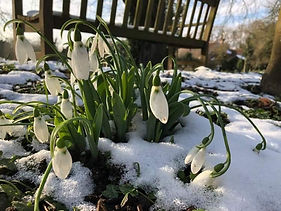

ANCIENT BUILDINGS
between them, our churches hold over 2,500 years of history

St Margaret's Darenth
built before 940

St Mary's Horton Kirby
built 1225

St John's Sutton-at-Hone
built early 1300s
St John's is currently fundraising towards the cost of vital repairs to the tower and other stonework: to help us achieve these works, please donate here: https://cafdonate.cafonline.org/13257
scroll down for history and images from all three churches
St Margaret's Darenth

The Chancel
The Chancel was built in the Norman era, an extension onto the original Anglo-Saxon construction. Medieval wall painting can still be seen on the walls and ceiling around the high altar, and the delicate stained glass windows depict ... (left), ... (centre) and ... (right) The mass is celebrated from the high altar, as it has been for a millenium.

The Font
The font at St Margaret's is a considerable size and a fascinating piece of Romanesque art. Made in the second half of the twelfth-century, this Norman font is carved from Caen stone and measures 2' 3" high and 2' 9" in diameter. There is an informative video about the font here: https://www.youtube.com/watch?v=lToP_rCCJ-0

The Bells
The bell tower, erected in the 13th century, has no structural staircase to reach the lower stages. There are three bells, one of which has no inscription but is thought by the Whitechapel Bell Foundry to date from c. 1400. The second one is inscribed ‘Stephanus Swan’ and dated 1609. The third was made by C&G Mears in Whitechapel in 1856.

The Churchyard
St Margaret's churchyard is an intensely peaceful place, a refuge away from the roar of the motorway. Generations of Darenth parishioners have been buried here and it is still possible to bury ashes in the churchyard. At different times of year the churchyard bursts with snowdrops, daffodils, and conkers - and there are always busy squirrels to spot too.
St Mary's Horton Kirby

The Church Building
St Mary's is a Grade II* listed building, completed c. 1225 in a larger form than we see today. The church was built at the same time as Rochester Cathedral as both buildings share a stonemason's benchmark.

Memorial Plaques
St Mary's is home to many memorial plaques, among them this one commemorating the Revd Walter Berry, vicar of Horton Kirby, killed in action in Normandy in 1944.

Bells
The bells at St Mary's ring out regularly over the valley. St Mary's has an active and committed bellringing team which is open to new members, with practices on Thursday evenings before re-hydration at the pub.
St John's Sutton-at-Hone

Pulpit and other Wooden Furnishings
In 1615 a gunshot fired to scare a pigeon from the church roof sparked a fire which set the roof alight. The roof and nearly all the church's woodwork was burnt, and some blackened timbers can still be seen in the church tower. The fittings were replaced 1617-1625, during which time the pulpit, still in use today, was installed.

Vicars' Board
The vicar's board details how the church was given to Rochester Cathedral by Henry I in 1077, and lists the names and dates of incumbents of the parish going back to 1193. Particularly poignant is the quick succession of incumbents in 1347-9, the years of the Black Death, when the parish had four vicars in three years.

Sir Thomas Smythe Memorial
Sir Thomas Smythe (c. 1558-1625) was an English merchant, politician and colonial administrator. He was auditor and later sheriff for the City of London, and first governor of the East India Company. He was also briefly imprisoned in the Tower of London. He retired to Sutton-at-Hone, and his legacy is administered by The Skinners' Company.

Hatchments
The dark diamond-shaped panels that hang on the church's walls are hatchments, or funerary panels, of notable people and bear their coats of arms. St John's has twelve hatchments, which is a relatively large collection. The oldest commemorates John Lethieullier of Sutton Place who died 3rd May 1760. The "newest" of the hatchments dates to 1856.

The Churchyard
Because the church is on the edge of the village and slightly elevated, there is a wonderful view from the churchyard over the school, village and surrounding fields. Wildlife flourishes, including miner bees and daffodils in spring-time. The burial ground in St John's churchyard is managed and maintained by Sutton-at-Hone and Hawley Parish Council.




